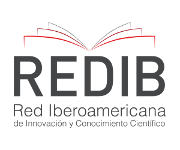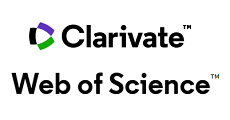Criterios para la seleccion de un sistema de tratamiento de residuos y su aplicación a las vinazas de la industria alcohólica
DOI:
https://doi.org/10.15446/ing.investig.n34.24813Keywords:
Ingeniería química, destilerías de alcohol, vinazas, compuestos industriales (es)Ingeniería química, destilerías de alcohol, vinazas, compuestos industriales (en)
Downloads
La selección de un sistema de tratamiento de residuos debe seguir los criterios del proceso denominado BATEA (Mejor Proceso Disponible y Factible Técnica y económicamente). Debido a que su aplicación es difícil por no contar con parámetros objetivos de evaluación, se presenta un método que clasifica los criterios de evaluación en generales y específicos. Para la cuantificación de estos aspectos se emplean factores de ponderación como FQO, FCI, FTR, FD y el Factor de Aplicabilidad del Tratamiento (FAT). El método aplicado a la vinaza permite concluir que es la evaporación el mejor sistema de tratamiento para dicho proceso, mientras no se desarrollen otros sistemas o se aumente la tasa retributiva.
References
Azad S., Industrial Wastewater Management Handbook, McGraw-Hill, New York, 1976.
El Tiempo, 12 de julio, 1992, 4C.
Caicedo L. A., Tratamiento de Vinazas, Universidad Nacional (sin publicar).
Maiorella B., Blanch W., Wilke C. Process Bioch., agosto, 1983.
Lettinga G., et. al., Conference "Anaerobic Waste Water Treatment in Fix Film Reactors", Copenhagem, junio 1982.
Skogman H., Process Bioch., enero, 1979.
Banco Mundial, Alcohol de Biomasa, New York, 1981.
Anderson G., Conferencia Planetario Distrital; Fundación Aire, Agua y Suelo, octubre, 1984.
Caicedo L. A., Duarte A., XIV Congreso de Ingeniería Química, Bogotá, 1984.
Weisberg, E., Chem. Eng., 18, junio, 1973.11. E.P.A., Handbook for Monitoring Industrial Wastewater, 1973.
How to Cite
APA
ACM
ACS
ABNT
Chicago
Harvard
IEEE
MLA
Turabian
Vancouver
Download Citation
CrossRef Cited-by
Dimensions
PlumX
Article abstract page views
Downloads
License
Copyright (c) 1996 Luis Alfonso Caicedo M., José Joaquín Fonseca, Gerardo Rodríguez

This work is licensed under a Creative Commons Attribution 4.0 International License.
The authors or holders of the copyright for each article hereby confer exclusive, limited and free authorization on the Universidad Nacional de Colombia's journal Ingeniería e Investigación concerning the aforementioned article which, once it has been evaluated and approved, will be submitted for publication, in line with the following items:
1. The version which has been corrected according to the evaluators' suggestions will be remitted and it will be made clear whether the aforementioned article is an unedited document regarding which the rights to be authorized are held and total responsibility will be assumed by the authors for the content of the work being submitted to Ingeniería e Investigación, the Universidad Nacional de Colombia and third-parties;
2. The authorization conferred on the journal will come into force from the date on which it is included in the respective volume and issue of Ingeniería e Investigación in the Open Journal Systems and on the journal's main page (https://revistas.unal.edu.co/index.php/ingeinv), as well as in different databases and indices in which the publication is indexed;
3. The authors authorize the Universidad Nacional de Colombia's journal Ingeniería e Investigación to publish the document in whatever required format (printed, digital, electronic or whatsoever known or yet to be discovered form) and authorize Ingeniería e Investigación to include the work in any indices and/or search engines deemed necessary for promoting its diffusion;
4. The authors accept that such authorization is given free of charge and they, therefore, waive any right to receive remuneration from the publication, distribution, public communication and any use whatsoever referred to in the terms of this authorization.



























